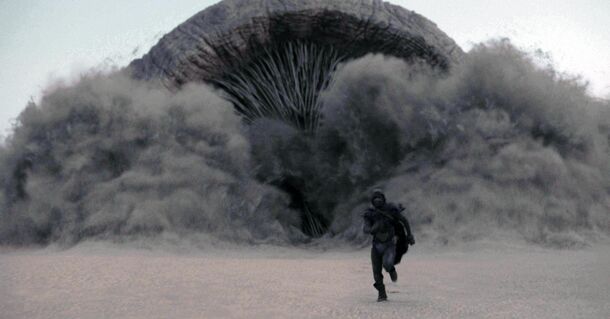Kilometres of Terror: Unraveling the Mystery of 'Dune’s' Sandworms

These creatures are simply too enormous to exist in reality.
In the Dune duology, attentive viewers might spot a few logical inconsistencies that slightly jar against the overall narrative. Some crucial elements for understanding the world remain off-screen, creating a sense of ambiguity. One of these concerns the famous sandworms.
Sandworms in Dune
The Shai-Hulud sandworms of Dune have become an iconic symbol of the universe. These creatures roaming the deserts of Arrakis inspire terror. For the Fremen — the planet’s native inhabitants — the worms are sacred. Not only do they worship these giants, but they have also learned to use them as formidable weapons and even as transport.
Biologically, the worms strikingly resemble Earth’s whales: they are filter feeders, passing vast amounts of sand through their bodies in search of plankton. Sound waves help them navigate the endless dunes, making them particularly dangerous.

The paradox of the sandworms
Nature has arranged for whales to reach gigantic sizes thanks to water. Water supports their massive bodies by evenly distributing their weight.
On land, however, whales would be doomed: without water’s support, their own weight would instantly crush their internal organs. That’s why terrestrial creatures physically cannot grow so large and remain mobile.
So how then do the sandworms of Dune grow to a fantastic 400 metres (and in the films, even kilometres)? Even on a planet with lower gravity, such giants would seem impossible. And on Arrakis — with Earth-like gravity and buried beneath tons of sand — it’s even more improbable. Even a silicon skeleton wouldn’t save them.

Another stumbling block is the temperature. Silicon-based life would require an extremely hot environment, like that of Venus. On the relatively cool Arrakis, the worms’ metabolism simply wouldn’t function. It seems Shai-Hulud are more a product of imagination than scientifically plausible lifeforms.
